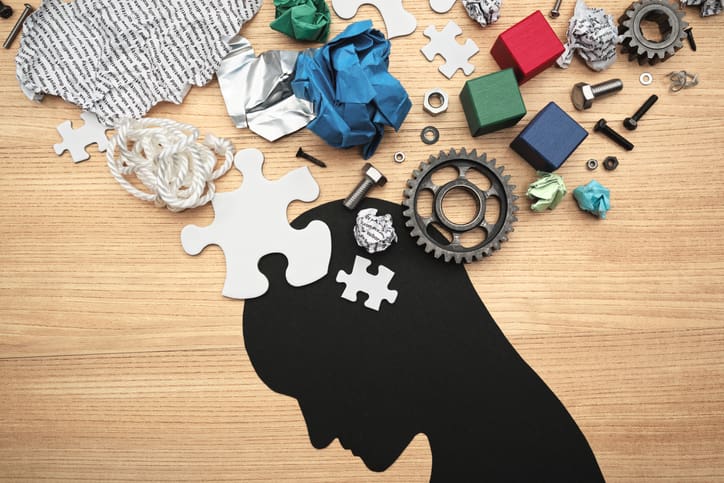It’s said that we all have within us, all the time, a place of calm. But when you struggle with mental health issues, it can be hard to access that quiet place. Emotions clamor for attention, repetitive thoughts flood the mind, and the critical voice is so loud that it drowns out everything else. So why, when the mind and emotions are so active, would we want to be alone with them? Wouldn’t it be better to distract ourselves from the pain, frustration, and guilt with activity and external stimulation?
We would argue that yes, distraction can sometimes be valuable. But we also believe that regular meditation and mindfulness practice will give you access to the place inside you that is at peace.
Finding the Calm Through Distraction
Distraction can come in handy when something difficult or stressful happens and you’re having a strong emotional reaction. If you have been diagnosed with emotional intensity disorder/borderline personality disorder, anxiety disorder, depression, bipolar disorder, or any mental illness that is at times characterized by intense emotions, you’ve probably learned in therapy some techniques to manage these emotions.
Cognitive-behavioral therapy (CBT) would have you examine your thoughts to determine how thinking patterns can exacerbate your emotional response. Dialectical behavior therapy (DBT) might teach you a 6-step technique for emotional regulation that involves being mindful of what you’re feeling, what caused it, how you chose to act, and the outcome of that action.
These are wonderful tools for paying attention to your patterns, and they can work very well. However, in the heat of emotion, it’s not always possible to have the distance needed to gain perspective. In these cases, distraction can be a temporary solution.
When emotions are high, you might try a variety of techniques to create some distance from the emotion until you’re able to think through the situation calmly:
- Call a good friend
- Write about your feelings in a journal
- Do some household chores or yard work
- Go for a walk or run
- Read a book or watch a movie
- Work on a jigsaw or crossword puzzle
- Focus on your breath
Notice what’s not on this list: drink alcohol, smoke a cigarette, go on a shopping spree, play video games all weekend, go out clubbing, eat a box of cookies. In other words, what some people would call “vices” are not great options for distraction. Why? Because these types of behaviors are usually done with the intent to avoid or escape the emotion–not to let it settle so that you can return to it and address it. Also, these behaviors can lead to addiction, the ultimate way to escape your emotions.
Cultivating Calm Through Meditation & Mindfulness
While distraction can be a useful short-term technique to manage mental health, meditation and mindfulness offer a long-term solution to finding and staying in the place of inner calm. How do they work?
They are both quite simple practices that don’t require anything but willingness, attention, and commitment. Mindfulness means giving your full attention to whatever you’re doing, feeling, sensing, and thinking. This attention, however, is not intense. It’s light, gentle, and nonjudgmental.
For example, if you’re washing dishes, rather than thinking about what you’ll do afterward or whether you’re doing it right or how you can’t wait for it to be over, you sink in (no pun intended). You notice how the water feels on your hands, you listen to the sounds of the dishes bumping each other, you take care to clean every crevice and curve. Immersing yourself fully in whatever you are doing will generate relaxation and calm.
In a way, mindfulness is meditation in action. Both practices cultivate full attention to the moment. In meditation, however, you’re generally sitting or lying still. You’re focusing on the sound and feel of the breath as you inhale and exhale. You might also tune into the senses, noticing what you hear, smell, see (even with your eyes closed), taste, and feel.
In both mindfulness and meditation, you don’t try to stop yourself from thinking or feeling, but instead of indulging or engaging in thoughts or feelings, you simply notice them and let them pass. You don’t take them too seriously. Over time, these practices will help clear away all of the voices that block you from your inner calm. The calmness will become easier to find and easier to sustain.
Finding Peace at Raleigh Oaks
If you’re struggling with a mental health disorder and unable to find stability, you’re not alone–and you haven’t failed. Our team in Garner, NC, would be happy to help you find your calm place. Our compassionate professionals will use a combination of meditation and therapy to treat your condition, and we’ll provide resources to support you after you leave treatment. To learn more, contact us today.





